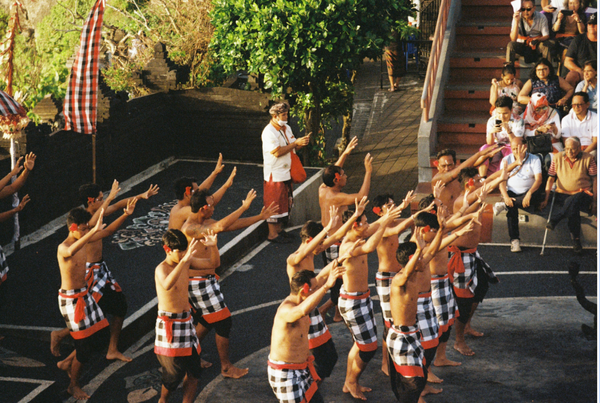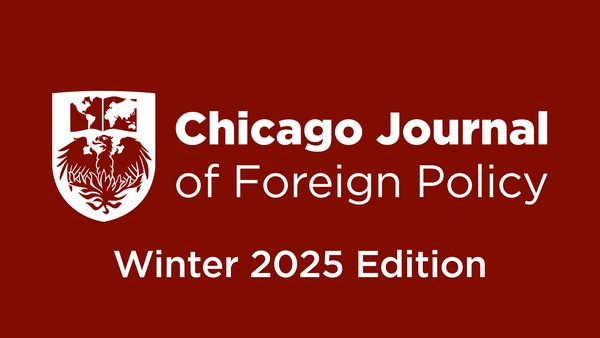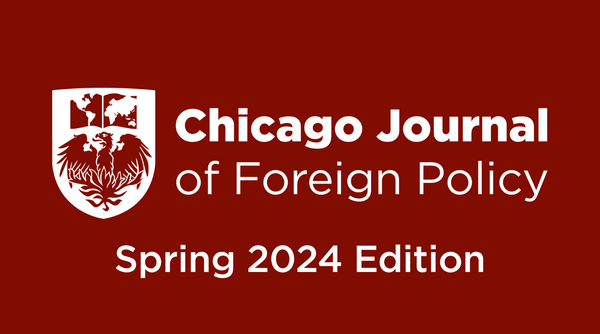Indian-Administered Kashmir: The Seed for India's Theocratic & Undemocratic Future

by PARANJAY SAHANII, University of Toronto ’23
Introduction
The term ‘azaad’ rings in every shop, street, and district of Kashmir.[1] The citizens want freedom from corrupt government machinery, loss of life, economic degradation, and brutality. Thus, it has become synonymous with the wants of the inhabitants of the region. However, the waves of Hindutvaand the unstable history of the Kashmir valley have reduced it to aspirations that threaten the national security of India.[2] By appropriating religion according to their terms, the Bharatiya Janata Party (BJP) led governments have used the violence in Kashmir to spread communalization across India. Thus, often reflecting the political and religious turmoil in the nation, India-administered Kashmir has become increasingly relevant in the sectarian conflict between Hindus and Muslims. This paper aims to examine the rise of a Hindutvapolitical ideology hosted by the current Indian government, whilst also exploring its relation to the friction between non-Muslim authorities in the central government and a region such as Kashmir, which is predominantly populated by Muslims . Furthermore, this paper will investigate the discrimination against the Muslim community, and how this undermines the democratic structure in India as the government manipulates the political rhetoric to suit their public narrative. This is furthered with the use of colonial tropes, adoption of exclusionary public policies, control of the mainstream media narrative, and by bringing out taxonomies of false nationalism, all of which are responsible for the deterioration of secularity and democracy in India. Such ideas and tactics demonstrate the violent journey of Kashmir into a “valley of despair,” threatening several principles that are enshrined in the Indian Constitution.[3]
History & the Rise of Hindutva
Kashmir has been the hotbed for a number of issues, such as the question of secularity, democracy, and the application of sovereignty. Several historians believe that Kashmir’s complex history began with Maharaja Hari Singh trying to turn the region into a separate state,however, the nationalistic political fervour of Partition prevented such action.[4] The Partition of a homogenous India broke the unified identity of Kashmir and divided the region into Indian-administered Kashmir and Azad Kashmir.[5] Such an arbitrary division of the region prevented Indian political leadership from consolidating their power over the region through democratic means, leading to several protests and three major wars– 1965, 1971 and the Kargil War- in the region.[6] Nonetheless, Kashmir turned into a political theatre, where India and Pakistan tried to assert their supremacy and legitimacy as a world power.[7]
Such instances of “covert war” led to the representation of Kashmir as a symbol of India’s Independence from outside rule.[8]This nationalistic symbolism provided the perfect opportunity for the promotion of this saffron wave of Hindu Nationalism and frame Pakistan, and Muslims in general, as the fictional enemy that promotes terrorism.[9]This thinking gave rise to the creation of a new-age ideology of Hindutvathat tried to shift the ideas of secularity, with the aim of assimilating the “marginalized community into the national body” through violent means.[10] Such a militarized conceptualisation of the Hindu State has originated from the writings of Sarvakar, leading to first the Gujarat Riots and now the radical Ashok Nagar Protests.[11] It is on the basis of such principles of “Hindudome” that the current government has gathered support for communal decisions like repealing the special status given to Kashmir in the Indian Constitution.[12] Thus, promotion of such an ideology has led to the discrimination of Muslims in Kashmir, and further reducing their freedoms at the national level.[13]
Discrimination Against Muslims
In the context of Kashmir, the governments have used “the ethnic card,” to portray that India’s integrity is being destroyed by rebellions from minority groups.[14] This can be seen as a direct attack on the Kashmir Muslims, giving rise to several cases of police brutality, sedition, and use of rape as a means of sexual humiliation. The military commands and controls every part of an individual’s life in India-administered Kashmir.[15] The Muslim-dominated region has been subjected to several cases of police brutality such as the death of Muzaffar Ahmad Bhat by paramilitary forces in 2010.[16] However, rather than replacing such authoritarian acts, the executive has used sedition laws, which were formulated by the British, to silence any voices of dissent. They have normalized such deviances ,so as to ensure supremacy of the Indian State in the Kashmir region and frame the public opinion in accordance with their sensibilities.[17] For example, in 2010, the uprising in Kashmir had led to protestors pelting stones to demonstrate their grievances against the armed forces. A lecturer, Noor Bhat, used this incident as a question in his examination paper, which led to his imprisonment on the count of sedition.[18] This demonstrates how the normative outlook towards human rights has led to the violation of Article 9 of the Universal Declaration of Human Rights in the Kashmir Valley.[19]
The imposition of the Armed Forces Special Protection Act (AFSPA), coupled with the inefficient Kashmiri Judiciary, has prevented security forces from being held accountable for several cases of rape against Kashmiri women. The security forces have used the sexual humiliation and stigmas attached with rape to silence the voices of the Muslim women and thus halt any form of female-initiated Kashmiri resistance movements. This stigmatisation of rape has led to a normalized outlook towards such a heinous crime and has prevented Muslim women from leading a progressive discussion around the entrenched rape culture. For example, in 2009, the security forces were accused of raping two women- Asiya and Neelofar- in Shopian. However, they were not imprisoned as the State executive, with the help of the Central Bureau of Investigation, suspiciously proved that the women died of drowning. The lack of executive action against these members of the security force is ironic and troubling given that a significant element of India’s cultural consciousness is the conception of the nation as a “mother.” [20] Furthermore, the CBI threatened any individual that opposed its decision, demonstrating how security forces are subduing the rights of the women and yet, the Indian government has not faced external pressure to repeal AFSPA.[21]
These instances of political differences and lack of accountability have allowed the executive to assert its dominance over the ethnic minority- Kashmiri Muslims– in India, leading to the fall of democratic principles in Kashmir. Such cases of discrimination shows how Kashmir is still affected by the pre-independence idea of, “Hindu Rulers, Muslim Subjects.”[22] The central governments have not been able to cater to the demands of the Muslim- dominated areas, preventing them from becoming a part of the national collective.[23] Since the rule of the Maharaja, Kashmir has faced the brunt of such discrepancies between the government and governed. In the beginning, it led to jihadist groups and covert war in the region; in recent times, it has reduced the position of the Muslim population in the national discourse and led to the victory of a nationalistic Hindu government in the elections.[24] This has led to the implementation of national policies such as the Beef Ban and Citizen Amendment Act that deteriorate India’s understanding of democracy and secularity.[25]
Colonial Tropes & Nationalistic Policies
Such a conception of majoritarian rule in India demonstrates that Kashmir has started to reflect the fall of principles such as diversity and unity at the national level. Ironically, these ideas of diversity that were the main forces of the independence movements, are now being treated as weaknesses that need to be eliminated with the help of colonial principles of indirect rule. They have used these colonial principles to treat Muslims, especially those residing in Kashmir, as aliens to the national discourse, which has given rise to military policies that indirectly attack their rights and freedoms.[26] In recent times, the use of colonial tropes has led to insurgency movements such as the Uri attacks, giving the government an opportunity to paint Pakistan as the enemy and indirectly treat Muslims as the inhabitants of an ‘enemy’ country, promoting a nationalistic narrative of hatred and ostracization of Muslims in India.[27] For example, India’s response to the Uri attacks increased BJP’s majority support, allowing conservative citizens to regularly chant harmful slogans that emphasize words like “anti-national.”[28] These slogans have become synonymous with Indian protests as they are used by the government supporters to silence dissenting opinions.
These nationalistic tendencies have originated from the contemporary Hindu nationals propagating Martyrdom and the protection of Kashmir as an essential part of the Indian society.[29] This has led to several loyal supporters of BJP using violence against any individual that, in their opinion, is an anti-national, and thus, a supporter of Pakistan. They form this cultural narrative by using rationales such as those who are dissenting government action are against the independence of India and dignity of the army officials. Hence, the Hindutvaideology promotes vigilante groups that aim to break India’s secular and democratic identity. These realities have given rise to identity politics and anti-pluralism in India, which are the main characteristics of a populist regime.[30] For example, several mobs responded to the CAA protest by burning mosques and inciting violence in the capital. It created a state of panic as members of the Muslim population were being subjected to police brutality, which is ironic given the special rights- Article 14 and Article 30- available to them in the Constitution.[31] The government uses the volatile situation at the Indian-administered border to implement actions that are aimed at disturbing the democratic consciousness of the Indian society, and furthering the creation of an India that is male and Hindu.[32]
Several protesters, who were trying to protect the rights of Muslims, have been regularly imprisoned for allegedly promoting separatism in Kashmir and thus, the archaic laws of sedition. Such authoritarian actions are painfully similar to the coercive tactics, such as mass imprisonment, which were used by the British during the colonial times.[33] Its employment indicates that the government is using a negative outlook towards Muslims in Kashmir to limit the legal definition of sedition and apply it according to their religious values.[34] For instance, following the Uri attacks, there was a forty-five percent increase in the sedition cases.[35] Yet, such decisions have not been challenged as the government has used violence in Kashmir to promote a form of “muscular nationalism that demonizes political dissent.”[36] Such a manufactured fall in political dissent is against the concept of popular sovereignty that is central to the Preamble of the Indian Constitution. Thus, the turbulent history of Kashmir and its symbolic importance to the Indian State has led to the recent BJP government using colonial actions to erode the democratic principles of the Indian nation such as opposition.[37]
The Media
The mainstream media in India has contributed to the deterioration of the situation in Kashmir and this lack of awareness about the executive discrimination in the region has led to the erosion of principles of democracy at the national level. Firstly, security risks such as loss of life that are associated with media reporting in conflict situations have led to new channels solely reporting on the basis of government statements, giving rise to media narratives that further the interests of the ruling party. [38] In recent years, the Hindutva culture in media reporting has given rise to a single story about the people and economy of the Kashmir valley, which is dangerous for national unity.[39] This has prevented the Kashmiri people from objecting to the harmful national stereotypes about their culture.[40] Secondly, Indian-administered Kashmir has constantly been affected by internet bans, preventing the rise of alternative opinions. After Article 370 was repealed in Kashmir, the government issued an internet ban that lasted for seven months, forcing the people to face such a grave situation in silence.[41] Through these bans, the government has been using their compulsory power to prevent the rise of progressive political thoughts.
National media channels such as ZEE News and Times Now have started using the chaos in Kashmir to communalize the news, shifting the focus of media reporting from national social issues to questions of nationality and religion. This shows how the new channels have started to align their interests with the current ruling party, which is disastrous for the democratic and secular principles enshrined in the Constitution.[42] Apart from attacking the principles of an opposition, the party alignment has given rise to political parties using religion to gain votes in the elections. Several party leaders have tried to win elections by visiting Hindu temples, rather than talking about their election manifesto. This use of Hindu nationalism by major political parties as a legitimate electoral strategy has reduced the voices of Muslims, which is ironic given how such a Hindu-based political climate has been created by the violence in a Muslim dominated region– India administered Kashmir.[43]
Media has been guilty of using the gendered and nationalistic outlooks towards Kashmir to further spread such communal sentiments. By treating India as a mother, they demonstrate that the insurgency attacks in Kashmir attack are a violation of “her body,” which is ironic given how the same media channels have shied away from reporting on the heinous cases of rape of Muslims in the valley. Such cases of hypocrisy and masculine obsession over Kashmir by new channels has given rise to a sense of overt nationalism that aims at limiting the voices of those individuals that do not abide by the recent government.[44] For example, the anti-national centric media reporting of the JNU protests by Zee News tried to suppress the student leaders that opposed the 2014 BJP government, leading to the fall of a powerful student movement.[45] Such actions further demonstrate that national media outlets have been reduced to profit-seeking companies that are not concerned about developing India’s secular and diverse identity; thus, eroding the role of the media as the third pillar of democracy.[46]
Conclusion
The turbulent history of Kashmir, exclusion of Muslims, and mainstream media have led to a situation of continuous violence in Kashmir, giving rise to Hindu nationalism and Hindutvaat the national level. The sectarian conflict in Indian-administered Kashmir has led to authoritarian acts such as AFSPA at the local level and CAA at the national level. These acts are characteristic of majoritarian rule, demonstrating that the rights of Kashmiri Muslims are no longer a priority for the governments at any level, leading to a feeling of exclusion.[47] The government has also used colonial norms such as indirect rule in Kashmir to further disintegrate the azaadi of citizens to protest and challenge authority at any level.[48] Hence, even though the government has excluded Indian-administered Kashmir from the national collective, the events in the region have negatively impacted the principles of secularity and democracy as enshrined in the Preamble of the Constitution. This demonstrates that there is a need to reformulate the international community’s understanding of Kashmir, so that every citizen, regardless of caste, creed or religion, can walk freely without being scared of discrimination. Such discussions are necessary if Indians want Kashmir to be a legitimate part of their future, and not another haven for extremists.
[1]Azaadi refers to freedom.
[2] Hindutva is a term used to describe right-wing Hindu nationalism.
[3]“The Constitution of India,” National Portal of India, accessed 10 February, 2019.
[4]Praveen Swami, India, Pakistan and the Secret Jihad: the Covert War in Kashmir, 1947-2004 (London: Routledge, 2012), 12-15.; Urvashi Butalia, The Other Side of Silence Voices from the Partition of India (New Delhi: Penguin Books, 2014), 1-7.
[5] Rathnam Indurthy, India-Pakistan Wars and the Kashmir Crisis (Abingdon, Oxon: Routledge, 2019), 16-41.
[6]Swami, India,Pakistan, 59-136.; “Kashmir: Conflict Timeline,” Peace Insight, accessed March 24, 2020, https://www.peaceinsight.org/conflicts/kashmir/conflict-profile/conflict-timeline.
[7]Indurthy, India-Pakistan Wars and the Kashmir Crisis, 5-75.; Swami, India, 5.
[8]Swami, India, 1-25.
[9]Martha C. Nussbaum, The Clash within: Democracy, Religious Violence, and India’s Future(Cambridge,: Belknap Press of Harvard University Press, 2008), 18-48.Through the book, Nussbaum is pointing out that the forces of the Hindu right have started to dominate the democratic rhetoric in national discourse.
[10]J. N Dixit, India-Pakistan in War Peace(London: Routledge, 2002), 321.; Manisha Basu, The Rhetoric of Hindu India: Language and Urban Nationalism (Cambridge, United Kingdom: Cambridge University Press, 2017), 4.
[11]Nussbaum, The Clash, 160-202; Hannah Ellis-Petersen, “Delhi Rocked by Deadly Protests during Donald Trump’s India Visit,” The Guardian (Guardian News and Media, February 25, 2020).
[12]Basu, The Rhetoric, 121.; Basu, The Rhetoric, 3-130.
[13]Pritam Singh, “Hindu Bias in India’s ‘Secular’ Constitution: Probing Flaws in the Instruments of Governance,” Third World Quarterly26, no. 6 (2005): 909-926.
[14]Seem Kazi, “Law, Gender and Governance in Kashmir” in Kashmir: History, Politics, Representation(Cambridge, United Kingdom: Cambridge University Press, 2018), 155.
[15]Christine De Matos and Rowena Ward, Gender, Power, and Military Occupations: Asia Pacific and the Middle East since 1945(Abingdon: Routledge, 2012), 223-225.
[16]Christine De Matos, Gender, 223.; Sumit Ganguly et al., “India, Pakistan, and the Kashmir Dispute: Unpacking the Dynamics of a South Asian Frozen Conflict,” Asia Europe Journal17, no. 1 (2018): pp. 129-143, https://doi.org/10.1007/s10308-018-0526-5).
[17]Michael N. Barnett and Martha Finnemore, “The Politics, Power, and Pathologies of International Organizations,” International Organization 53, no. 4 (1999): 721-722.
[18]Anushka Singh, Sedition in Liberal Democracies (New Delhi, India: Oxford University Press, 2018), 316-318.
[19]“Universal Declaration of Human Rights,” United Nations General Assembly (United Nations, 10 December, 1948). The response of the executive has mainly violated the following rights Article 1 of the declaration gives everyone the right to be treated with dignity; however, the violent action of the police and mobs clearly violated this article.;Haley Duschinski et al., Resisting Occupation in Kashmir(Philadelphia: University of Pennsylvania Press, 2018), 193-201.
[20]Amrita Basu, Violent Conjunctures in Democratic India. The Case of Hindu Nationalism (Cambridge: Cambridge University Press, 2015): 99. The BJP has been trying to use this portrayal of India as mother, who needs to be protected against the Muslims, to further their own aim of a Hindu Nation.
[21]Kazi, “Law,” 164-165. The adjudication of this heinous crime faced several obstacles such as the police destroying vital evidence, and the corrupt administration, which is extremely disheartening.
[22]Mridu Rai, Hindu Rulers, Muslim Subjects(Princeton University Press, 2004), 2-10.
[23]Mushirul Hasan, Will Secular India Survive? (Dhaka, Bangladesh: University Press Ltd., 2004), 42-90.
[24]Swami,India, 1-25.
[25]ET Online, “Citizenship (Amendment) Act 2019: What Is It and Why Is It Seen as a Problem,” The Economic Times (Economic Times, December 31, 2019).
[26]Rakesh Ankit, “Britain and Kashmir, 1948: ‘The Arena of the UN,” Diplomacy & Statecraft24, no. 2 (2013): 273-277.
[27]The Uri attacks marked an important turning point in the history of India’s military, which has been involved in several intergovernmental wars. It was the Indian military’s response to an insurgency movement(by terrorist organisations)that led to the death of army officials.
[28] Karthika Sasikumar, “India’s Surgical Strikes: Response to Strategic Imperatives,” The Round Table108, no. 2 (April 2019): 162.
[29]Dipankar Gupta, “The search for Martyrs,”The Times of India, Bombay, September 2, 1995.
[30]Jan-Werner Müller, What Is Populism ?(UK: Penguin Books, 2017), 16-22. A right-wing populist state includes concepts such as nationalism and conservatism.
[31] “The Constitution of India,” National Portal of India, accessed 10 February, 2019.
[32] Himani Bannerji, “Making India Hindu and Male,” Ethnicities 6, no. 3 (2006): 362. The BJP has invented several traditions to further its own political agenda, which has led to the creation of a Hindutva based Indian culture. These traditions are filled with racism and caste modalities. (Bannerji, “Making,” 375.)
[33]Taylor C. Sherman, State Violence and Punishment in India (London: Routledge, 2010), 14-17.
[34]Singh, Sedition, 311-319.
[35]“Crime in India – 2017,” National Crime Records Bureau, 2019, http://ncrb.gov.in/crime-india.
[36]Dr. Sanjay Ruparelia, “A new India, new China,”(Talk, International Issues Discussion Forum, Toronto, February 26, 2020).
[37] “The Constitution of India,” National Portal of India, accessed 10 February, 2019.
[38] Syed Nazakat, “Indian Media Coverage of Kashmir,” Asia Pacific Media Educator22, no. 1 (2012): 69-71.
[39]Chimamanda Adichie, “The danger of a single story,” filmed July 2009 at TEDGlobal, 18:49,https://www.ted.com/talks/chimamanda_adichie_the_danger_of_a_single_story.
[40]Azaan Javaid, “Social Media Ban Lifted in J&K after 7 Months ,” ThePrint, March 4, 2020, https://theprint.in/india/social-media-ban-lifted-in-jk-after-7-months
[41]Michael Barnett and Raymond Duvall, “Power in International Politics,” International Organization 59, no. 01 (2005), 49-51. By using police violence and bureaucratic pressure, the government applied direct pressure upon the protestors, so as to prevent the protest from growing at a national level.
[42]Subarno Chattarji, “Student Protests, Media and the University in India,” Postcolonial Studies 22, no. 1 (February 2019): 83-89.
[43]Arun Swamy, “What’s religion go to do with it?” in Religious Radicalism and Security in South Asia(Honolulu: Asia-Pacific Center for Security Studies, 2004): 90-100.
[44]Nitasha Kaul, “India’s Obsession with Kashmir: Democracy, Gender, (Anti-)Nationalism,” Feminist Review119, no. 1 (2018): 127-128.
[45]Chattarji, “Student Protests,” 83-87.
[46]Chattarji, “Student Protests,” 82-89.
[47]Kazi, “Law,” 155-165.
[48]Rosinka Chaudhuri, “Questions of Minority, Agency and Voice: Student Protests in India in 2016,” Postcolonial Studies 21, no. 3 (March 2018): 338-340.





